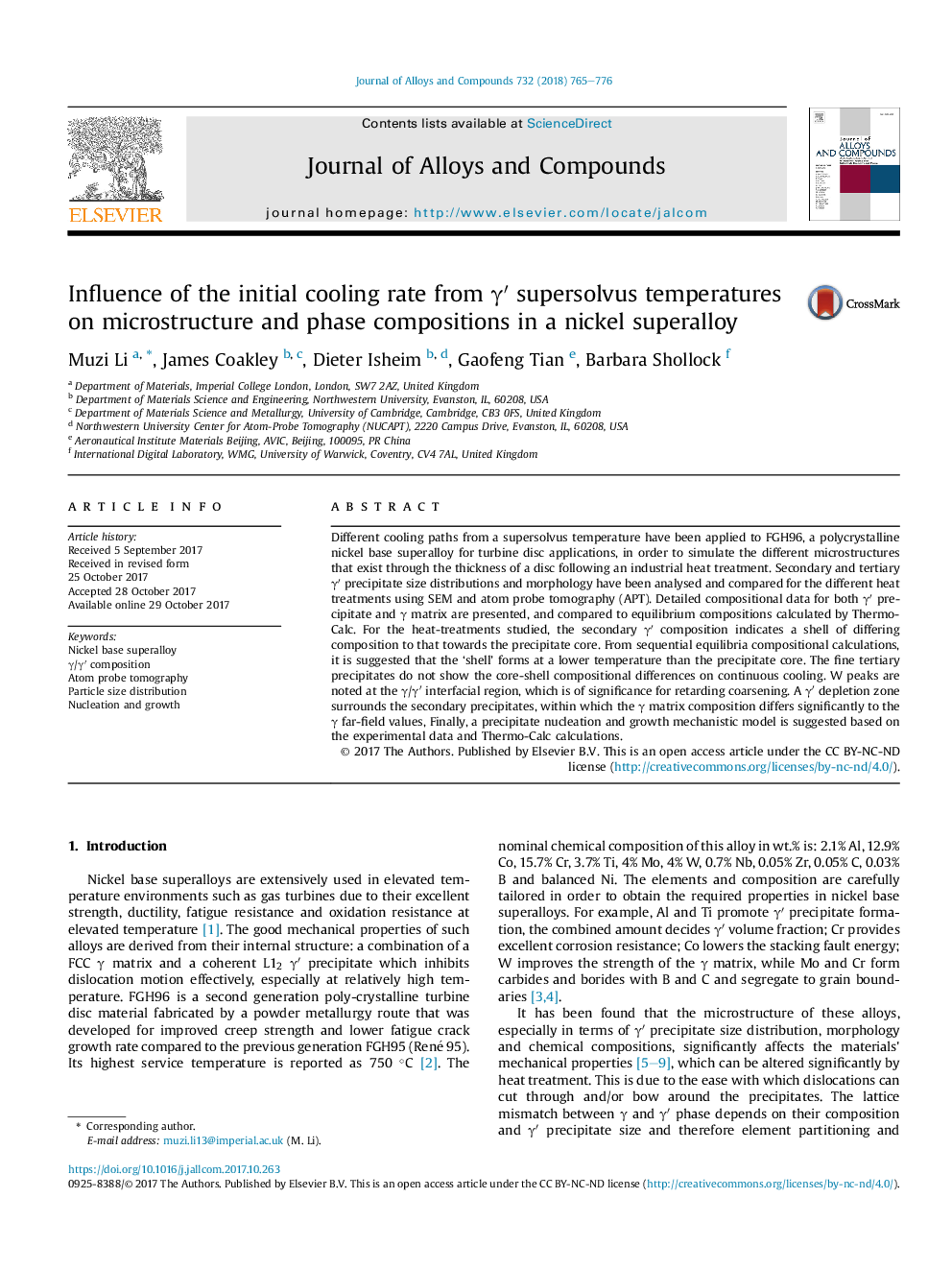| Article ID | Journal | Published Year | Pages | File Type |
|---|---|---|---|---|
| 7995168 | Journal of Alloys and Compounds | 2018 | 12 Pages |
Abstract
Different cooling paths from a supersolvus temperature have been applied to FGH96, a polycrystalline nickel base superalloy for turbine disc applications, in order to simulate the different microstructures that exist through the thickness of a disc following an industrial heat treatment. Secondary and tertiary γⲠprecipitate size distributions and morphology have been analysed and compared for the different heat treatments using SEM and atom probe tomography (APT). Detailed compositional data for both γⲠprecipitate and γ matrix are presented, and compared to equilibrium compositions calculated by Thermo-Calc. For the heat-treatments studied, the secondary γⲠcomposition indicates a shell of differing composition to that towards the precipitate core. From sequential equilibria compositional calculations, it is suggested that the 'shell' forms at a lower temperature than the precipitate core. The fine tertiary precipitates do not show the core-shell compositional differences on continuous cooling. W peaks are noted at the γ/γⲠinterfacial region, which is of significance for retarding coarsening. A γⲠdepletion zone surrounds the secondary precipitates, within which the γ matrix composition differs significantly to the γ far-field values, Finally, a precipitate nucleation and growth mechanistic model is suggested based on the experimental data and Thermo-Calc calculations.
Related Topics
Physical Sciences and Engineering
Materials Science
Metals and Alloys
Authors
Muzi Li, James Coakley, Dieter Isheim, Gaofeng Tian, Barbara Shollock,
